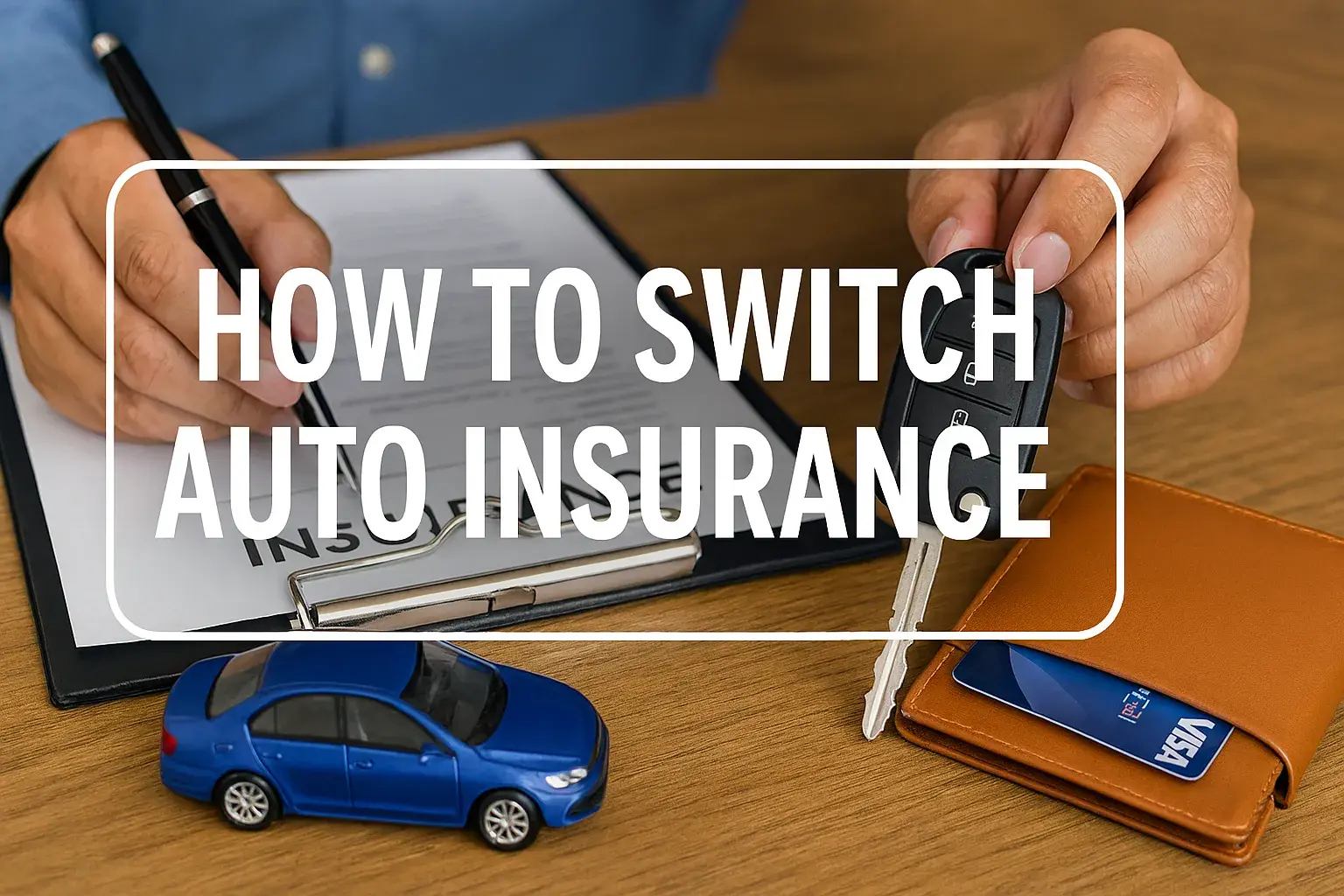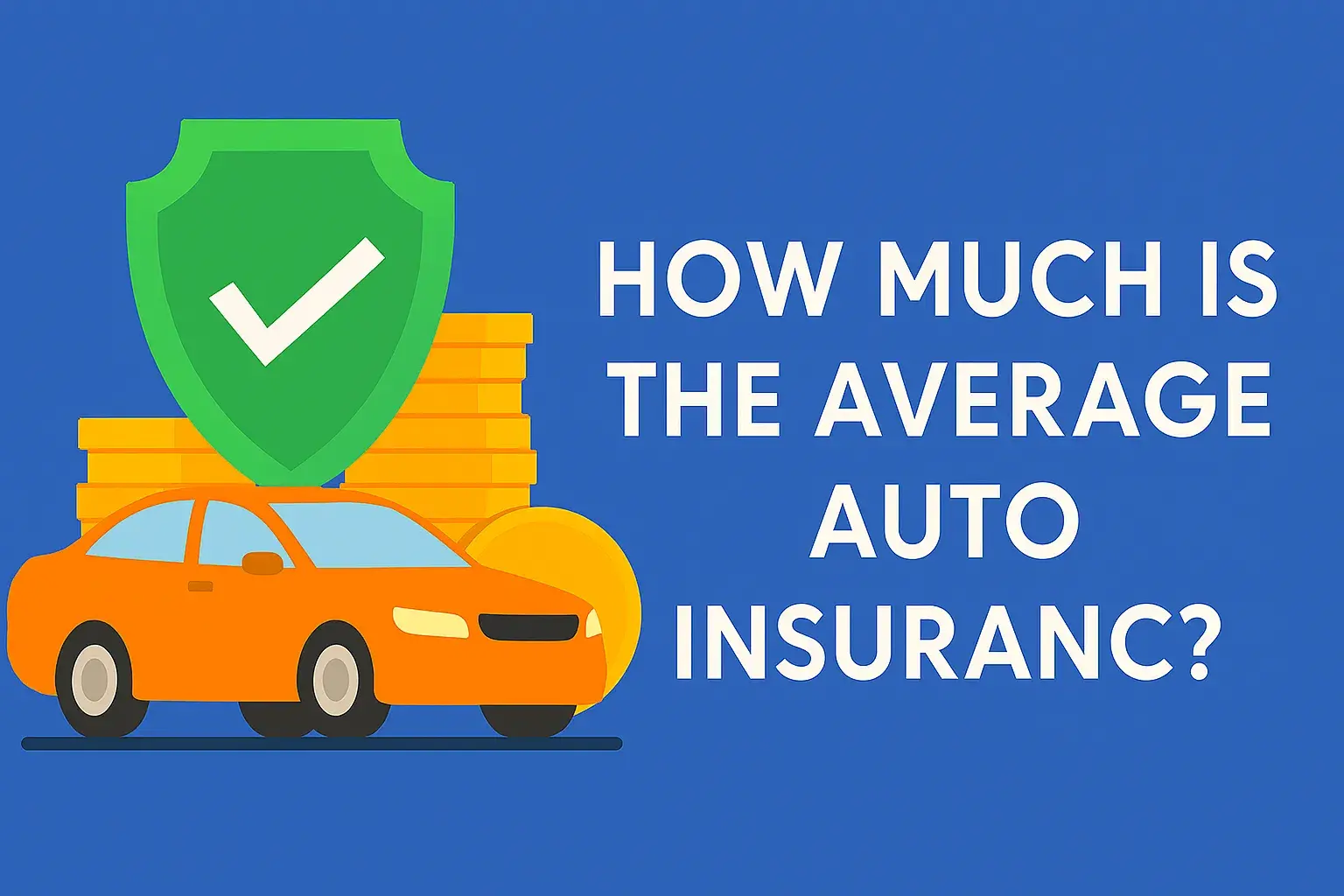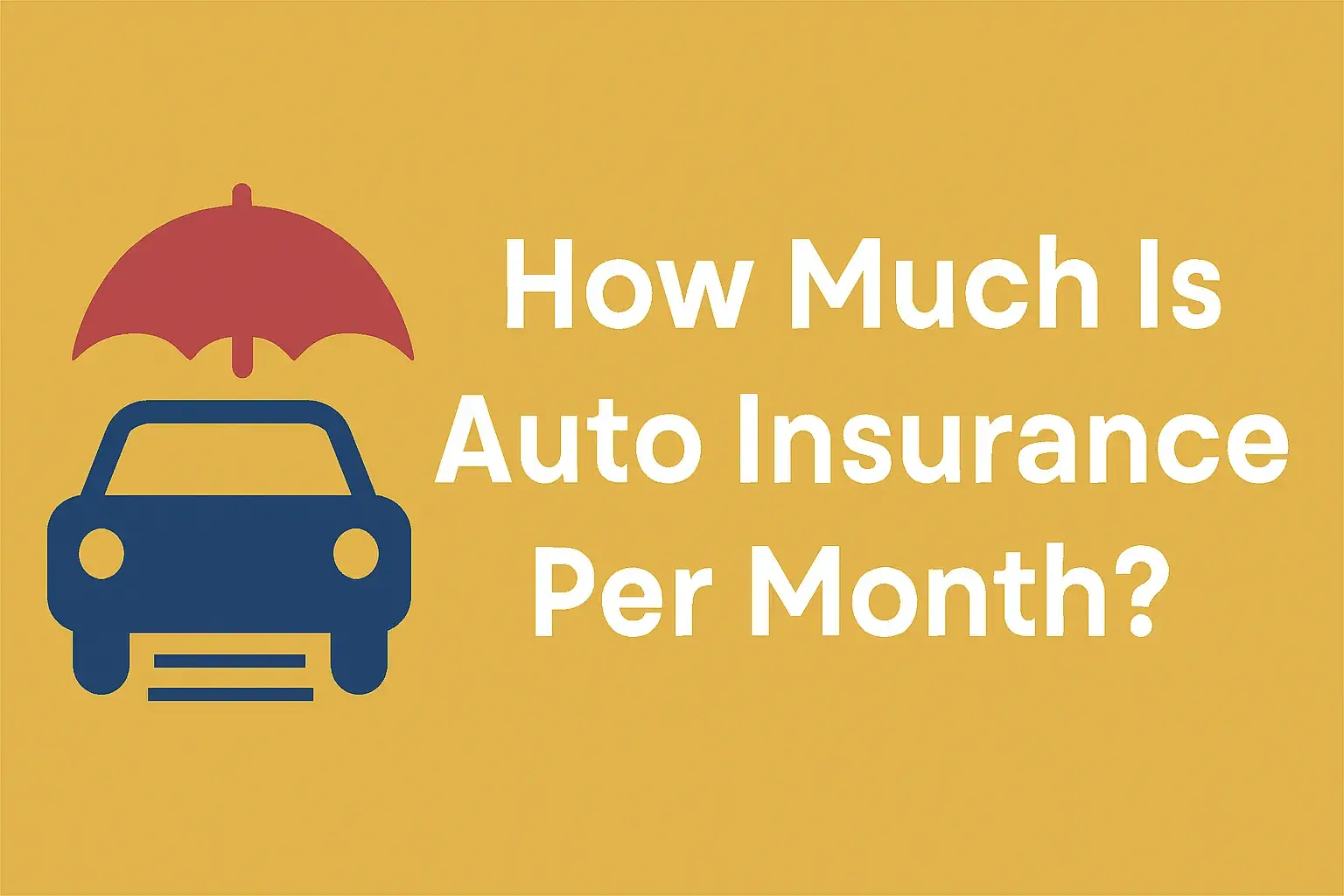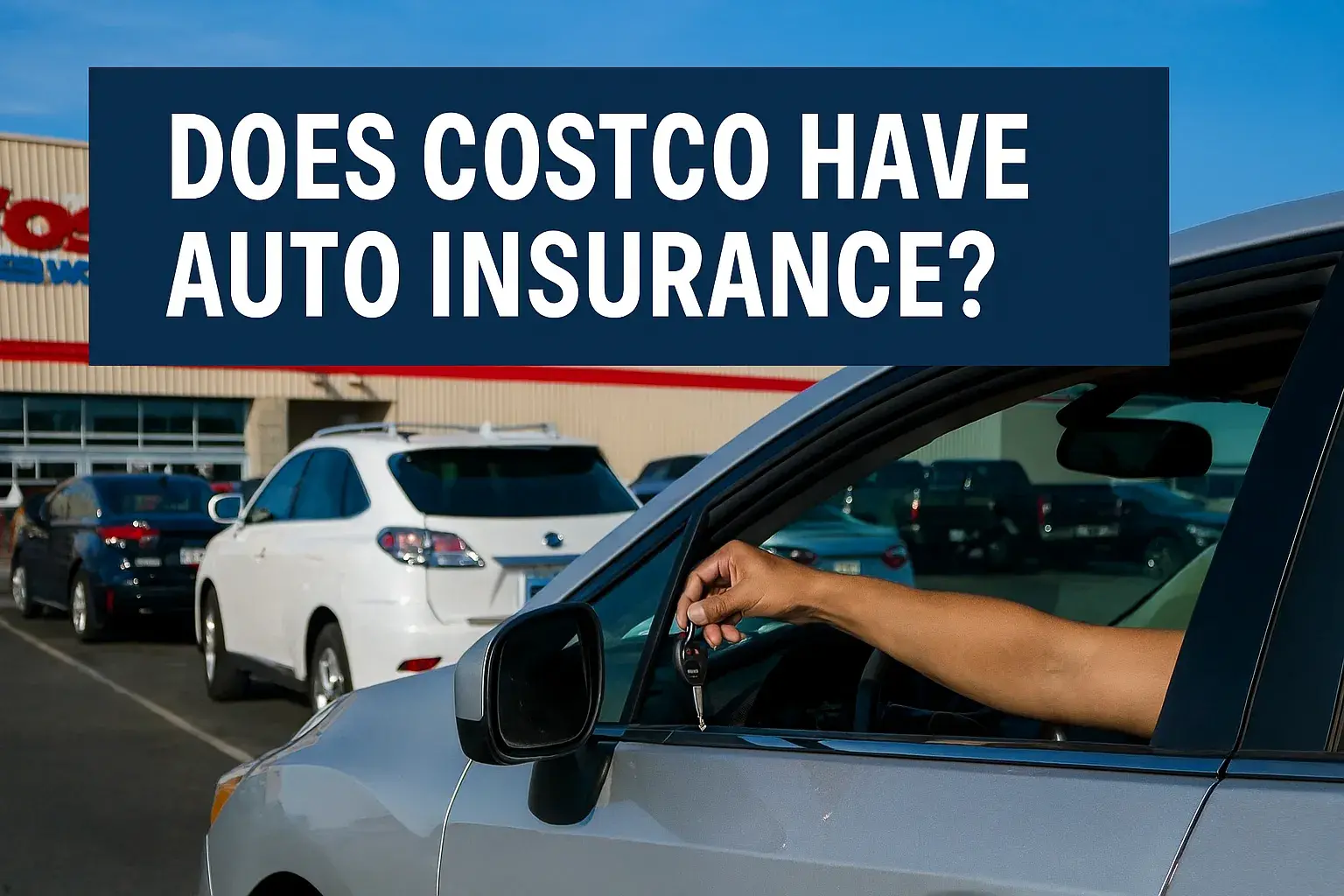11
Sep
Introduction: Why Switching Auto Insurance is a Smart Financial Move
Let's be honest: most of us set up our auto insurance policy once and then forget about it, letting it renew year after year without a second thought. It’s easy to see why. The process of switching car insurance can seem daunting, filled with paperwork, phone calls, and the fear of making a costly mistake.
But here’s the truth you need to hear: that inertia is costing you money. A lot of it.
Loyalty rarely pays in the auto insurance industry. While you've been a reliable customer, new companies are fiercely competing for your business, often offering significant discounts and better rates to new policyholders. Learning how to switch auto insurance is one of the most effective financial wellness habits a driver can develop. Whether you're motivated by lower car insurance rates, a life change, or simply better service, this guide will empower you to make the switch confidently, safely, and seamlessly.
The key to a successful transition lies in timing, comparison, and avoiding coverage gaps. We’ll cover all of that and more, turning a seemingly complex task into a straightforward, money-saving endeavor.
When is the Best Time to Switch Car Insurance?
Timing your switch strategically can maximize your savings and simplify the process. While you can technically initiate changing auto insurance companies at any point, certain life events and policy milestones create ideal opportunities.
1. At Policy Renewal
This is the simplest and most common time to switch. About 2-4 weeks before your current policy is set to renew, you’ll receive a renewal notice. This is your cue to start shopping. Switching at renewal avoids potential early cancellation fees and ensures a clean break between policies.
2. After a Major Life Event
Certain life changes can drastically affect your premiums, signaling a prime time to shop for new auto insurance savings.
-
Moving to a new state or city: Insurance rates are highly location-dependent. A move could make you eligible for much lower rates.
-
Buying a new car: A new vehicle purchase requires a new policy. Don’t just add it to your old one; use it as a chance to re-shop your entire coverage.
-
Getting married: Statistics show married drivers are involved in fewer accidents, often qualifying them for better rates.
-
Adding a teen driver: While this increases your premium, it’s a critical moment to find a company that offers strong good student or driver training discounts.
-
Improving your credit score: In most states, a better credit score can lead to significantly lower premiums.
3. After Improving Your Driving Record
If a past ticket or at-fault accident has finally fallen off your record (typically after 3-5 years), your risk profile in the eyes of insurers has improved. Your current company might not automatically adjust your rate downward, but a new company will see your clean slate and likely offer a better price.
4. When Your Premium Increases
Did you get a renewal notice with a surprising rate hike? This is one of the biggest triggers for drivers to start looking. Before accepting the increase, get quotes from other providers to see if the jump is industry-wide or unique to your insurer.
Pro Tip: Even if none of these scenarios apply to you, it’s a best practice to comparison shop every 12-18 months. The market changes constantly, and a better deal is almost always available.
Your Step-by-Step Guide to Switching Auto Insurance Companies
Follow this foolproof process to ensure a smooth transition that protects your wallet and your vehicle.
Step 1: Review Your Current Auto Insurance Policy
You can’t know what you need until you know what you have. Dig out your current policy documents or log into your insurer’s portal. Take note of:
-
Coverage Types and Limits: Liability (Bodily Injury & Property Damage), Uninsured/Underinsured Motorist, Comprehensive, Collision, Medical Payments (PIP).
-
Deductibles: Your chosen amount for Comprehensive and Collision coverage.
-
Current Premium: What you’re paying now (break it down per month and per term).
-
Policy End Date: The official renewal date.
-
Discounts: Any you currently receive (multi-policy, safe driver, etc.).
This review ensures you are comparing apples to apples when you get new quotes.
Step 2: Shop Around and Compare Car Insurance Quotes
This is the most critical step for finding auto insurance savings. Don’t just get one quote; get at least three to five from different types of providers (large national companies, smaller regional carriers, and direct-to-consumer insurers).
How to Get Accurate Quotes:
-
Use Online Comparison Tools: Many websites allow you to input your information once and receive multiple quotes.
-
Contact Companies Directly: Call or use individual company websites.
-
Work with an Independent Agent: They work with multiple carriers and can do the shopping for you.
Information You’ll Need to Provide:
-
Driver's license numbers for all household drivers.
-
Vehicle Identification Numbers (VINs) for all cars.
-
Current coverage details.
-
Driving history (accidents, tickets).
Ensure you request identical coverage limits and deductibles with each quote to make a true comparison. A lower price is meaningless if it comes with drastically reduced coverage.
Step 3: Choose Your New Insurance Provider
Price is important, but it shouldn’t be the only factor. Consider:
-
Financial Strength: Check ratings from agencies like A.M. Best or Standard & Poor’s to ensure the company is financially stable.
-
Customer Service Reviews: Look at J.D. Power ratings and customer testimonials to gauge satisfaction with claims handling and service.
-
Digital Tools: A good app and website can make managing your policy and filing claims much easier.
Step 4: Finalize and Purchase Your New Policy
Before you click "buy," do two final things:
-
Confirm the Start Date: Set the effective date of your new policy to begin the day after your old policy expires. This is the #1 way to avoid coverage gaps.
-
Double-Check Everything: Ensure all vehicles, drivers, and coverages are listed correctly on the new policy documents.
Step 5: Cancel Your Old Insurance Policy
Do NOT cancel your old policy until your new one is officially active and you have the proof of insurance in hand (either digitally or physically).
How to Cancel Your Old Policy:
-
Call Your Agent or Carrier: The most reliable method. Inform them you are switching and wish to cancel effective the day your new policy begins.
-
Send a Written Cancellation Request: Some companies require written confirmation. Follow their specific procedures.
-
Ask About a Refund: If you’ve prepaid for a six-month or annual policy, you are entitled to a refund if you cancel the insurance early for the unused portion. Confirm how and when you will receive this.
How to Avoid Costly Coverage Gaps When Switching
A coverage gap is any period, even one day, where you are driving without active auto insurance. This is extremely dangerous and expensive. Here’s why:
-
It’s Illegal: Driving without insurance can result in fines, license suspension, and vehicle impoundment.
-
Financial Risk: If you cause an accident during a gap, you are personally responsible for all damages and medical bills, which could be financially devastating.
-
Higher Future Premiums: Insurance companies view a lapse in coverage as a major red flag and will charge you significantly more when you try to get a new policy.
The Golden Rule: Overlap your policies by one day rather than risk a one-day gap. Have your new policy start before you cancel the old one.
How to Transfer Auto Insurance to a New Car or State
Switching Insurance When You Buy a New Car
Most policies have a "grace period" (often 14-30 days) that automatically extends your existing coverage to a newly acquired vehicle. However, this is usually only for comprehensive and collision coverage if you already have those coverages on another car.
-
The Safe Play: Call your insurer (old or new) before you drive off the lot to add the vehicle officially. This takes minutes and guarantees you’re fully covered.
Switching Insurance When You Move to a New State
You must update your insurance when you move. Your current policy may not meet the minimum coverage requirements of your new state.
-
Notify your insurer: Inform them of your move and new address. They will adjust your policy or may not be able to insure you in the new state, forcing you to switch.
-
Shop for New Quotes: Use your new address to get quotes from companies that operate in your new state. This is a non-negotiable step.
Pros and Cons of Switching Auto Insurance Providers
Advantages (Pros)
-
Significant Cost Savings: The primary motivator. You could save hundreds of dollars per year.
-
Better Customer Service: Switching to a company known for superior claims handling and support.
-
Access to New Discounts: New customer discounts, bundling opportunities, or usage-based insurance programs that your old company didn't offer.
-
Improved Coverage Options: Tailoring a policy to your exact needs with modern features like rideshare coverage or new car replacement.
Potential Disadvantages (Cons)
-
Potential Cancellation Fees: Some companies charge a fee for canceling mid-term. Weigh this cost against your potential savings.
-
Loss of Loyalty Discounts: If you’ve been with a company for many years, you might lose a long-term customer discount. (Though often, new customer discounts outweigh this.)
-
Admin Work: The process requires time and organization.
-
Risk of a Coverage Gap: If not handled correctly, as discussed above.
7 Common Mistakes to Avoid When Changing Auto Insurance
-
Focusing Only on Price: The cheapest policy is often cheap for a reason—skimpy coverage or terrible claims service.
-
Having a Coverage Gap: We cannot stress this enough. Never cancel first.
-
Forgetting to Cancel Your Old Policy: Assuming it cancels automatically can lead to you being double-billed or having a non-payment mark on your record.
-
Not Shopping Your Entire Policy: When adding a new car or driver, re-shop everything. Don’t just accept the add-on cost.
-
Overlooking Discounts: Ask every new provider for a full list of available discounts you may qualify for.
-
Not Getting Everything in Writing: Verbal quotes or promises aren't binding. Ensure your new policy documents reflect exactly what you discussed.
-
Failing to Update Your Lienholder: If you have a car loan, you must provide your lienholder (bank/credit union) with the new policy information so they remain the loss payee.
Top Money-Saving Tips for Switching Auto Insurance
-
Bundle Your Policies: The most powerful discount. Combining your auto and homeowners/renters insurance with one company can save you 15-25%.
-
Ask About Every Discount: Good driver, good student, anti-theft devices, low mileage, paid-in-full, paperless billing, etc.
-
Consider Higher Deductibles: Opting for a higher deductible on your comprehensive and collision coverage can lower your premium. Just ensure you have that amount saved in an emergency fund.
-
Pay in Full: Paying your six-month or annual premium upfront is almost always cheaper than paying monthly installments, which often have service fees.
-
Look into Usage-Based Insurance: Programs like Progressive’s Snapshot or Allstate’s Drivewise monitor your driving habits and can offer significant discounts for safe driving.
Real-Life Scenarios: Switching Insurance Made Practical
-
Scenario 1: The Rate Hike. Sarah’s renewal notice showed a 20% increase for no reason. She spent an hour getting three online quotes, found a highly-rated company offering the same coverage for 30% less than her original rate, and saved over $400 a year.
-
Scenario 2: The Cross-Country Move. When Mark moved from Michigan (a no-fault state with high rates) to Oregon, he shopped for new quotes using his new address. He found a policy that met Oregon’s requirements and cut his premium in half.
-
Scenario 3: The New Driver. The Smiths added their 16-year-old to their policy, and the cost skyrocketed. They shopped around and found a company that offered a substantial "good student" discount and a competitive rate for teen drivers, saving them $1,200 per year.
Conclusion: Your Pathway to Better Coverage and Bigger Savings
Learning how to switch auto insurance is an essential skill for any financially savvy driver. It’s not an act of disloyalty; it’s an act of smart consumerism. By following the steps outlined in this guide—reviewing your policy, comparing quotes, timing your switch correctly, and meticulously avoiding coverage gaps—you can transition to a new provider with confidence and ease.
Make it a habit to review your policy and shop around every year or two. Your driving profile and the insurance market are always changing. Regular reviews ensure you never overpay for the coverage you need to protect yourself, your family, and your assets on the road.
Ready to start saving? The journey to lower car insurance rates begins with a single click or phone call. Get your quotes today!
FAQ Section: Your Questions on Switching Car Insurance, Answered
Q1: Can you switch auto insurance anytime?
A: Yes, you can switch auto insurance at any time, whether you're mid-policy or at renewal. However, if you cancel mid-term, some companies may charge a short-rate cancellation fee. It's often most financially advantageous to switch at your renewal date to avoid this fee.
Q2: Do you get a refund if you cancel car insurance early?
A: Absolutely. If you’ve prepaid your premium and cancel mid-term, you are entitled to a refund for the unused portion of your policy, minus any applicable cancellation fees. The refund is typically processed within a few weeks.
Q3: Is there a penalty for switching car insurance?
A: There is no universal "penalty" from a regulatory body. However, your current insurer may charge an early cancellation fee if you switch mid-policy. Always check your policy terms or ask your agent about any potential fees before canceling.
Q4: How do I switch car insurance mid-policy?
A: The process is identical to switching at renewal. Secure your new policy first with a start date that aligns with your desired cancellation date for the old policy. Then, formally cancel your old policy and request your refund.
Q5: Can I switch car insurance with an open claim?
A: Yes, you can technically switch. However, the open claim will still be handled by your old insurance company, as they were your insurer at the time of the incident. The claim will not transfer to your new provider.
Q6: What happens if I cancel my old policy before the new one starts?
A: This creates a dangerous coverage gap. You will be driving uninsured, which is illegal and puts you at massive financial risk. Never cancel your old policy until your new one is active and you have proof of insurance.
Q7: Does switching car insurance affect your credit score?
A: Shopping for insurance quotes involves a "soft" credit inquiry, which does not affect your credit score. However, the act of switching itself is not reported to credit bureaus and has no direct impact on your score.
Q8: Is it cheaper to switch auto insurance companies?
A: In most cases, yes. Insurance companies often offer their best rates to new customers to attract business. Long-term customers frequently see gradual rate increases. Shopping around is the most reliable way to ensure you're not overpaying.
Q9: How often should I shop around for auto insurance?
A: Financial experts and insurance advisors recommend comparing quotes from other companies at least once every 12-18 months. This ensures you are always aware of the current market for your profile.
Q10: What documents are needed to switch car insurance?
A: You will typically need your driver’s license, vehicle registration, proof of current insurance, and payment method for the new policy. Some insurers may also ask for prior insurance history.
-
Your driver’s license number.
-
The Vehicle Identification Number (VIN) for each car.
-
Your current insurance policy details (coverages, limits, deductibles).
-
Basic information about all drivers in your household.
-
Your current mileage and information about your vehicle's primary use.





